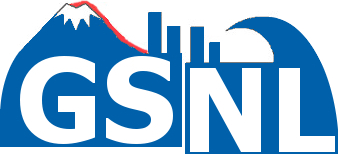A 4-page summary of the GSNL initiative objectives, partners, activities, is available as a pdf document: GSNL in a nutshell
WHAT IS GSNL
The concept for the Geohazard Supersites and Natural Laboratory was conceived during the 3rd International Geohazards workshop held in November 2007 at ESA-ESRIN. In 2010 it was established as an initiative within the Group on Earth Observation (GEO), and is organised as a voluntary international partnership which aims to improve geophysical scientific research and geohazard assessment, promoting rapid and effective uptake of scientific results for enhanced societal benefits in Disaster Risk Reduction (DRR). The focus of the initiative are areas with important scientific problems and high risk levels: the Supersites and the Natural Laboratories.
WHO ARE WE?
The space agencies under the Committee for Earth Observation Satellites (CEOS) support the initiative by contributing satellite imagery at no cost over the Supersite areas, within a specific quota agreed in advance.
In situ data providers, as geophysical monitoring institutes and research infrastructure consortiums, provide open access to data and research products, and contribute in kind resources for the management of the Supersites and their data infrastructures.
The international scientific community exploits the openly shared EO data to investigate the volcanic or tectonic processes ongoing at the Supersites. They in turn are expected to share the results of their research in a reusable format.
The end-users and decision makers involved in Disaster Risk Management receive updated scientific information which can greatly benefit their Prevention or Response activities at the Supersites.
Details on the composition of our Partnership are available here.
WHY GSNL
The incomplete knowledge of seismic and volcanic phenomena and the slow uptake of scientific results by decision makers often increase the consequences of eruptions and earthquakes, especially in less developed countries. The lack of knowledge may be caused by lack of observations, but can also be due to a difficult access to existing data and reusable scientific results. Other relevant causes could be the lack of local capacities, technologies, resources.
By establishing a Supersite, the local scientific community can increase the level of international collaboration and attention on important scientific questions. The advancements generated by the focused scientific investigations will be transferred to end-users and decision makers by the Supersite Coordinator, ensuring a smooth and rapid uptake of information.
HOW GSNL WORKS
Supersite proposals are first evaluated by the GSNL Scientific Advisory Committee and independent reviewers. The CEOS Data Coordination Team (DCT) collects the various space agencies’ commitments to support the Supersite image requests (with archive data and new acquisitions). The space agencies then provide open access to satellite imagery for the Supersite scientific community. The in situ data providers (which in most cases are the Supersite Coordinators) commit to provide open access to ground-based data. The Supersite data and resources are open for the international scientific community (licensing may apply), and this stimulates collaboration, knowledge transfer, capacity building, and generation of new scientific results, which are shared within the community.
The research results which are relevant to geohazard assessment are then communicated by the Supersite Coordinator to the end-users and decision makers, using the national institutional channels.
GSNL OBJECTIVES
- to enable the global scientific community with open, full and easy access to a variety of space- and ground-based data over the Supersites and the Natural Laboratories;
- to promote advancements in geohazard science over the selected sites;
- to promote the rapid uptake of scientific results by DRR stakeholders and decision makers;
- to innovate technologies, processes, and communication models, enhancing data sharing, global scientific collaboration, and capacity building in geohazard science.


